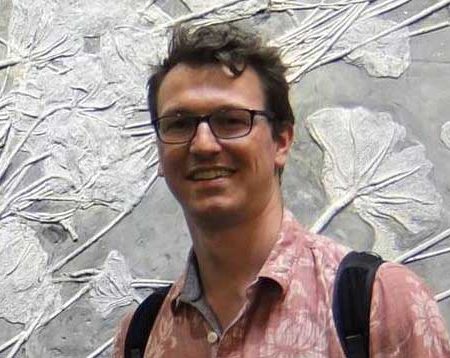
Rising levels of carbon dioxide may have little effect on the smallest organisms that live in ocean sediment, according to a new study by a Florida State University researcher.
FSU Coastal and Marine Laboratory scientist Jeroen Ingels and a team of researchers found that communities of microscopic organisms called meiofauna don’t change much when faced with both rising carbon dioxide levels and higher temperatures. That’s in contrast to larger organisms, which have previously shown to be largely affected by changes in environment.
Meiofauna are miniscule invertebrates that live in both marine and fresh water environments. They are the base of the food web, so researchers are eager to learn more about how climate change may affect them.
Ingels’ findings are published in the Journal of Experimental Marine Biology and Ecology.
“Meiofauna respond to the changes, but they are quite resilient at the same time,” Ingels said. “Some species become more dominant, but overall, they’re still there.”
This may be related to the fact that intertidal areas are exposed to variable conditions on a daily basis, and so the organisms living in these systems need to be resilient to these changes.
Ingels and his team specifically looked at how meiofauna in intertidal sediments in Scotland reacted to the carbon dioxide and temperature changes. Researchers increased the temperature from 12 degrees Celsius (53.6 Fahrenheit) to 16 degrees Celsius (60.8 Fahrenheit) and higher levels of carbon dioxide.
“We are getting the organisms and the sediments they live in, removing the larger organisms, and then putting these in a tub and exposing them to higher carbon dioxide levels,” Ingels said. “It’s kind of a shock treatment really.”
The research team examined organisms that existed in both muddy environments and sandy sediment in the Eden Estuary in Scotland. They saw more changes in the muddy community than sandy sediment. For example, they saw a small decrease in the abundance of overall meiofauna in the muddy sediments. And nematodes, a type of roundworm, diversified.
“We’re not sure what’s causing the different responses, but possibly biogeochemistry differences between the different types of environments is likely to have something to do with it,” Ingels said.
Ingels added that researchers are in an observational stage to see what is happening to these small organisms under predicted warming and increased carbon dioxide exposure. The next stage will be to understand the underlying mechanisms.
This work was funded by the Plymouth Marine Laboratory in the U.K., the NERC Ocean Acidification Programme, the British Council and EU Marie Curie Scholarship.
Other authors on the paper are Giovanni dos Santos, Yirina Valdes Vazquez, Patricia Fernandes Neres, Leticia Pereira Pontes and Mayara Nataly Amorin from Cidade Universitária in Brazil; Natalie Hicks from the Scottish Marine Institute; Sara Román from Centre d’Estudis Avancats de Blanes in Spain; Yongfen Du from Nanjing University in China; Henrik Stahl from Zayed University in the United Arab Emirates; and Paul Somerfield and Stephen Widdicombe from the Plymouth Marine Laboratory.




